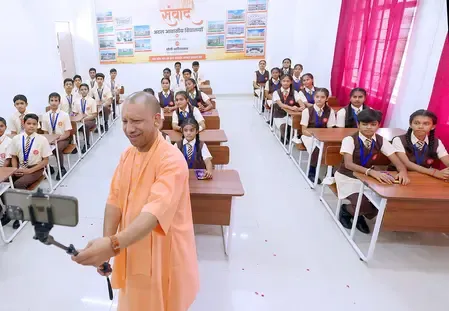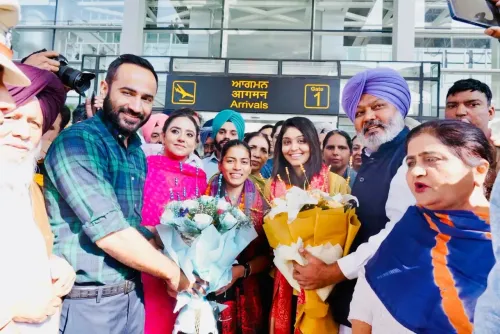How Are Students in Sarvodaya Schools and Govt Hostels in UP Contributing to ‘Shramdan’ Every Sunday?

Synopsis
Key Takeaways
- Weekly shramdan enhances cleanliness in schools and hostels.
- Promotes environmental awareness among students.
- Encourages discipline and teamwork.
- Monitoring through QR codes ensures transparency.
- Students take ownership of their surroundings.
Lucknow, Sep 14 (NationPress) In a bid to rejuvenate Prime Minister Narendra Modi's Swachh Bharat Abhiyaan, the Uttar Pradesh government has introduced an innovative initiative for weekly shramdan every Sunday across all Jai Prakash Narayan Sarvodaya Schools and government hostels in the state.
Launched under the leadership of Chief Minister Yogi Adityanath and Minister of State for Social Welfare (Independent Charge) Asim Arun, this initiative aims to encourage students to actively participate in the Clean India mission and motivate their peers to join in.
The primary goal of this initiative is to develop discipline, teamwork, and an appreciation for labor among students while ensuring cleaner and more appealing educational environments.
The Shramdan campaign will be implemented in all Sarvodaya schools as well as government-run hostels. As part of this project, students will exert 'extra effort' to enhance the aesthetics of their school grounds and hostels through shramdan.
Every Sunday, students will take part in cleaning activities on school and hostel campuses, focusing on repairing damaged furniture, cleaning water tanks and drains, and ensuring waste is disposed of properly. Schools have been equipped with brooms, spades, buckets, pans, and dustbins for this purpose.
The initiative will also promote gardening tasks, including weeding, planting new saplings, and composting dry leaves and twigs, thereby fostering environmental consciousness among students.
To encourage friendly competition, schools will be divided into houses, with each house assigned specific shramdan responsibilities aimed at beautifying their campuses.
Furthermore, before-and-after images of shramdan activities will be uploaded to a centralized web portal using QR codes, ensuring transparency and accountability.









